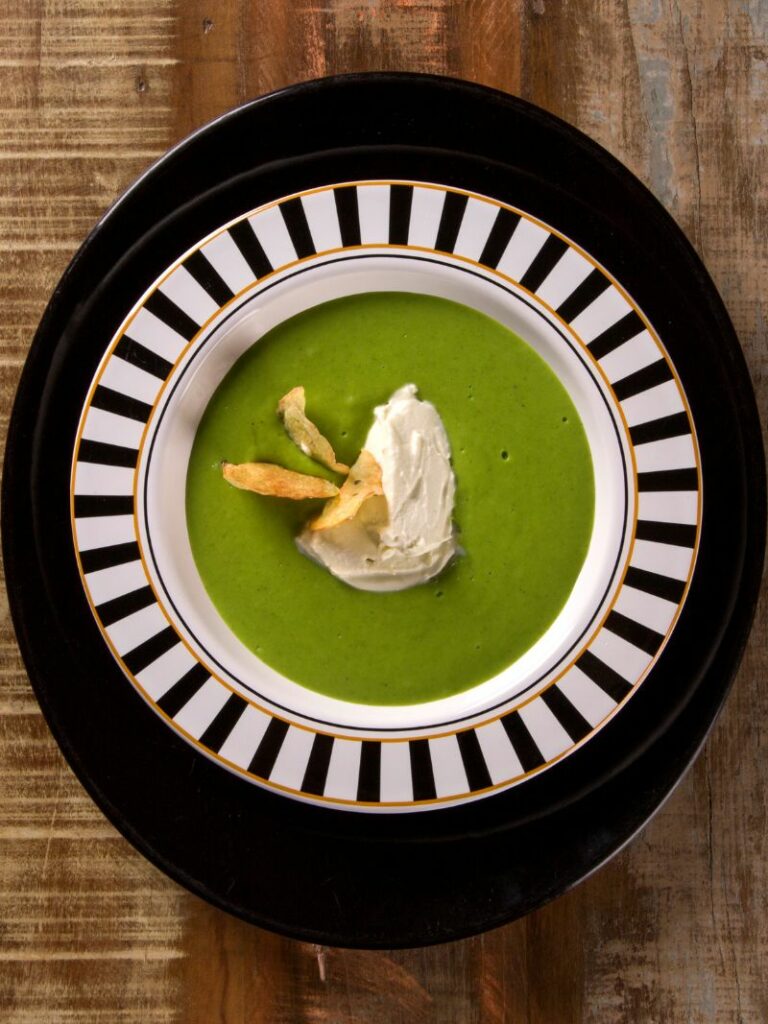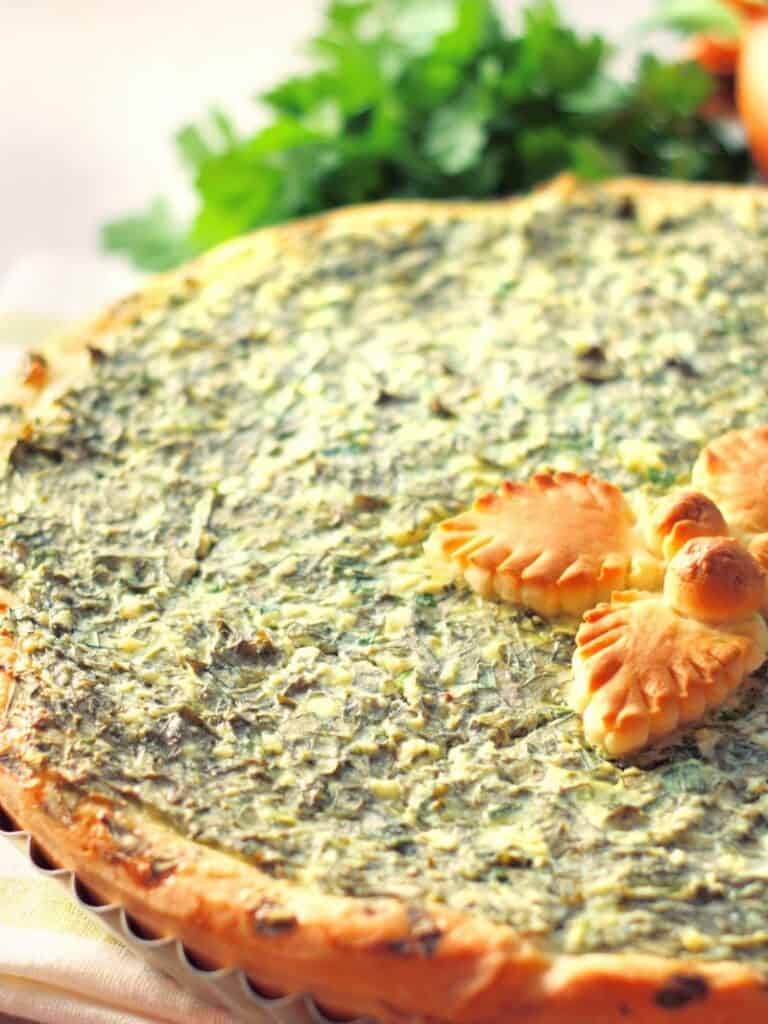Looking to supercharge your health and diet?
If you’re tired of feeling sluggish and want to take control of your well-being, it’s time to start incorporating watercress into your diet.
This small but mighty green is packed with essential nutrients and health benefits that can address some of the most common health concerns.
Watercress, a leafy green with a peppery taste, is a nutritional powerhouse that can help improve digestion, boost immunity, and lower the risk of chronic diseases such as cancer and heart disease. Watercress is an excellent addition to any meal with its high levels of vitamins, minerals, and antioxidants.
In this article, we’ll explore the many benefits of watercress and how to incorporate it into your daily diet.
We’ll look at the nutritional profile of watercress and its potential health benefits and provide some delicious recipe ideas for incorporating this superfood into your meals.
Whether you’re a foodie looking for new ingredients to experiment with or someone who wants to improve their health, watercress is a superfood you don’t want to miss out on.
What is Watercress?

Watercress is a leafy green packed full of nutritional benefits and is considered to be a superfood. A single serving of watercress provides your body with between 6 and 7 percent of your daily needs in vitamin A.
It also contains high levels of phytochemicals, which may have antioxidant properties, as well as low in potassium, making it an excellent choice for those trying to regulate their sodium levels.
In addition to all these health benefits, watercress is said to help promote healthy skin, helping you look great on the outside too!
It’s no wonder why watercress has become so popular and is strongly recommended for adding to your diet for maximum health.
Before it was cultivated for food and medicinal purposes, watercress had a long-standing history with humans.
Records reveal that its cultivation dated back over 2000 years and was used by Greeks and Romans before that relationally.
In ancient India, too, references to watercress appear in Ayurvedic texts due to its medicinal properties.
Watercress has since been regaining its place in diet today due to the numerous proven nutritional benefits – making this superfood something we couldn’t go without!
History And Origin Of Watercress

Watercress is a superfood many of us need to include in our diet.
According to Professor Ian Rowland at the University of Ulster, watercress is an excellent source of essential nutrients such as vitamin C, calcium, iron, and folate.
Furthermore, “superfood” was first used in the early 20th century to describe bananas as an excellent nutritional source of cheap, easily digestible nutrition.
Watercress has been cultivated and consumed for centuries since the Roman era. Hippocrates was believed to have given his patients watercress for its health benefits.
Nowadays, we are seeing a resurgence in interest in watercress because of its nutrient density and versatility. Furthermore, people appreciate how easy it is to digest compared to other vegetables or fruits.
Including watercress in our daily meals remains easy for its various health benefits. Apart from providing essential vitamins and minerals necessary for good health, it also helps protect against oxidative damage from free radicals.
Health Benefits Of Consuming Watercress
Watercress, a leafy green vegetable that belongs to the cruciferous family of veggies, is often seen as a superfood due to its numerous health benefits. Let’s dive in and learn how adding watercress to your diet can benefit you.
Not only does it boost immunity, but it also offers thyroid support. Studies have shown that it is associated with various anti-cancer effects, and its consumption can help stimulate antioxidant enzymes which reduce DNA damage.
here are some of the health benefits of watercress:
- High in nutrients: Watercress is an excellent source of vitamins C and K and minerals such as calcium and potassium.
- Boosts immunity: Watercress’s high vitamin C content can help support a healthy immune system.
- May reduce cancer risk: Some studies suggest that watercress may help prevent certain types of cancer due to its anti-cancer properties.
- Promotes healthy digestion: Watercress can help improve digestion and alleviate constipation due to its high fiber content.
- Supports bone health: The vitamin K in watercress can help improve bone density and reduce the risk of fractures.
- Lowers risk of heart disease: Watercress may help lower blood pressure and reduce the risk of heart disease due to its high levels of antioxidants and anti-inflammatory compounds.
Culinary Uses Of Watercress In Various Dishes
Watercress is a superfood packed with nutrients to help you reach your wellness goals. You can use watercress in many tasty dishes as part of a balanced diet.
To make the most of it, sprinkle it on salads or stir it into soups at the end of cooking for added flavor. You can also replace lettuce in sandwiches and wraps with some watercress.
Plus, you could add it to your next omelet or egg scramble, make a delicious pesto using watercress, chop it up, add it to pasta sauce, and even sauté the greens in some extra virgin olive oil.
Here are some delicious recipes that feature watercress as a star ingredient:
Watercress and Potato Soup

This creamy and comforting soup is made with potatoes, onions, garlic, and fresh watercress. It’s perfect for a cozy night in and contains nutrients and flavor.
Watercress Pesto

This twist on traditional basil pesto is made with watercress, garlic, parmesan cheese, pine nuts, and olive oil. It’s a delicious and nutritious spread that can be used on pasta, sandwiches, or as dip.
Watercress and Goat Cheese Tart

This savory tart has a flaky pastry crust, creamy goat cheese, caramelized onions, and fresh watercress. It’s an excellent option for brunch or a light lunch.
Grilled Chicken with Watercress and Avocado Salad
This healthy and flavorful dish features grilled chicken breast on a bed of fresh watercress, sliced avocado, and cherry tomatoes. It’s topped with a simple lemon and olive oil dressing for a light and refreshing meal.
Watercress and Mushroom Stir-Fry

This quick and easy stir-fry is made with sliced mushrooms, egg yolks, garlic, ginger, and fresh watercress. It’s a great vegetarian option that’s packed with flavor and nutrients.
How To Select And Store Watercress

Watercress is a delicate leafy green that should be carefully selected and stored to stay fresh and flavorful.
Here are some tips on how to select and store watercress:
Look for vibrant, fresh-looking leaves
When selecting watercress, choose bright green leaves free of any yellowing or wilting. The leaves should also be firm and crisp to the touch.
Check for signs of freshness
Watercress should have a fresh, peppery smell. If it smells off or musty, it’s likely past its prime.
Store in the refrigerator
Watercress should be stored in a plastic bag or airtight container in the refrigerator. It’s best to use it within a few days of purchase, as it can quickly wilt and lose flavor.
Keep it dry
Before storing, gently pat the leaves with a paper towel to remove any excess moisture. This can help prevent wilting and extend the shelf life of the watercress.
Avoid freezing
Watercress does not freeze well and can quickly lose its texture and flavor if frozen. It’s best to use fresh watercress as soon as possible after purchase.
Tips For Preparing And Cooking With Watercress
Cooking with watercress is easier,
Here are some tips and tricks to help you get the most out of cooking with watercress:
- Rinse watercress thoroughly: Watercress can harbor dirt and bacteria, so it’s important to rinse it thoroughly under running water before using it in a dish.
- Remove any tough stems: Watercress stems can be tough and fibrous, so removing them before using the leaves in a dish is a good idea.
- Add watercress at the end of cooking: Watercress has a delicate texture and flavor that can be easily overcooked. To avoid this, add watercress to your dish at the end of cooking, just before serving.
- Use watercress in salads: Watercress is a great addition to salads, as it adds a fresh, peppery flavor and a burst of nutrients. Pair it with other greens, vegetables, and a simple vinaigrette for a delicious and healthy salad.
- Make watercress pesto: Watercress pesto is a delicious and healthy alternative to traditional basil pesto. Simply blend fresh watercress, garlic, parmesan cheese, pine nuts, and olive oil in a food processor until smooth. Use it as a spread, dip, or sauce for pasta.
- Add watercress to soups and stews: Watercress can be a flavorful addition to soups and stews, especially those made with potatoes, leeks, and other root vegetables. Add it at the end of cooking to preserve its texture and flavor.
- Use watercress as a garnish: Watercress makes a beautiful and flavorful garnish for many dishes, from grilled meats to omelets. Use it to add a pop of color and a fresh, peppery flavor to your plate.
- Pair watercress with lemon: The bright, tangy flavor of lemon pairs well with the peppery taste of watercress. Use lemon juice or zest to brighten up the watercress in a dish.
Watercress Substitutes
Watercress is a unique and flavorful ingredient, but if it’s unavailable or you’re looking for a substitute, consider several options.
Here are some watercress substitutes to try:
Arugula
Arugula has a peppery flavor similar to watercress and can be used in many dishes, such as salads and sandwiches.
Spinach
Spinach has a mild flavor and a tender texture, making it a good substitute for watercress in many dishes. It’s especially well-suited for soups and stews.
Mustard greens
Mustard greens have a peppery taste similar to watercress but slightly more bitter. They’re a good option for stir-fries and sautés.
Radish sprouts
Radish sprouts have a similar peppery flavor to watercress, but they’re milder and have a slightly different texture. They’re a good substitute for watercress in salads and sandwiches.
Kale
While kale doesn’t have the same peppery taste as watercress, it’s a nutritious and flavorful green that can be used in many of the same dishes. It’s especially well-suited for soups and stews.
These are just a few examples of watercress substitutes that you can try. While they may not have the same flavor or nutritional profile as watercress, they can still add a delicious and nutritious element to your meals.





